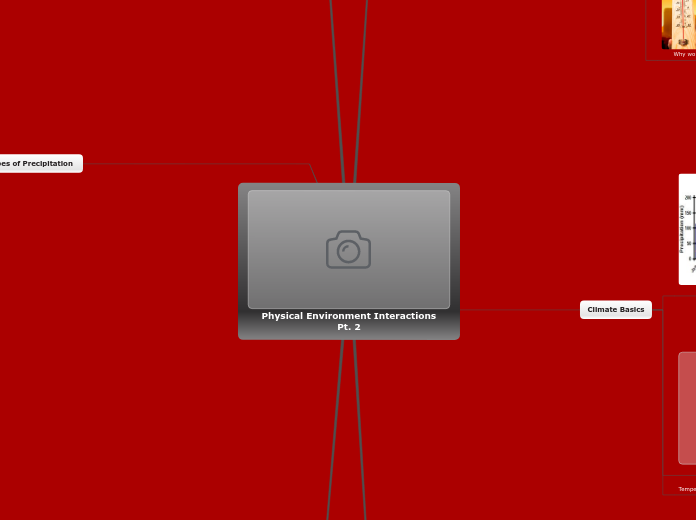af Fernando De Francesca 4 år siden
885
Physical Environment Interactions Pt. 2

af Fernando De Francesca 4 år siden
885

Mere som dette
Lowest in the middle of the year
Highest at the beggining and end of a year
Goes below 0°
Gets higher throughout the year
Goes under 0°
More in summer, less in winter
More in middle of the year
Low precipitation
Goes under -20°
Low precip.
goes under 0°
Large temp. range
High precip.
More in summer, Less in winter
Doesn't go below 0°
Highprecip.
Less in summer, More in winter
doesn't go below 0°
Small temp. range
Can not survive in winter
Their needles can conduct photosynthesis on warm days even out season
Branches and needles shack of snow easily
Have waxy needles to prevent water loss in droughts
Have sap that works as anti-freeze
They can extract minerals from bad soil
Water dissolves nutrients into soil so plants can suck them up
Plants need air in the roots
Gives soil its dark color
Decomposed plants and animals. That give nutrients to plants
Minerals needed by plants and animals
Closer to water bodies = colder summers, warmer winters & more precip.
Farther away from water bodies = hot summers, cold winters & less precip.
Windward = wet side
Leeward = dry side, Nickname: Rain shadow
As the moist air rises up the windward side at mountain range it expands & cools
Mountains block precipitation
Higher elevation = more moisture
As air expands it loses heat
When air rises, it expands, because there is less air pressure
The higher the elevation the lower the temperature
Oceans contain moisture
Less precipitation inland (Continental loocation)
Air moisture releasing precipitation
When 2 currents meet the weather is often damp & foggy
Ocean currents affect the temp. of air that passes over it
The higher the latitude the lower the temperature
Wind
Humidity
Precipitation (rain,snow,hail)
Temperature
Day to day
Average weather of a place, over long period of time
Growing season
Colour the space between the line and your red temp line
Draw a line at 5.6°C
Bar graph showing precipitation
Colour them blue
Y axis on right side
Measured in mmper month
Draw bars for each month precip
Line graph showing temperature
Coneect dots with a red lign
Plot monthly values in middle of each column
Y axis on left side
Measure in°C
Water vapor
Ozone
Nitrous oxide
Methane
Carbon dioxide